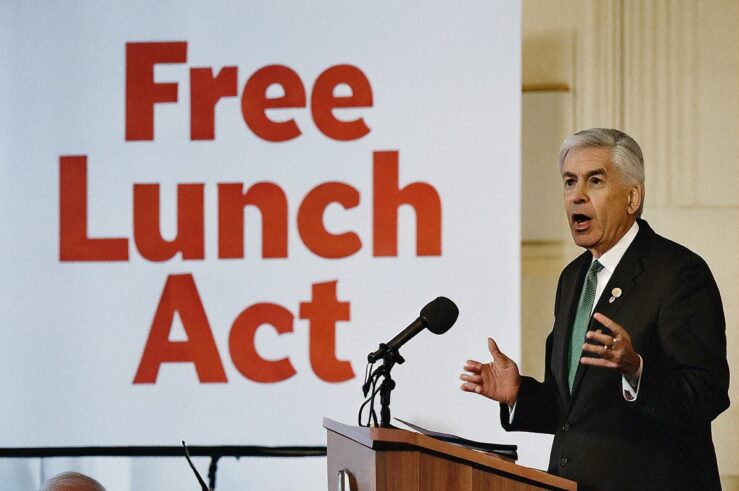The Ninth Circuit recently issued a decision that pushes the doctrine governing tying in the right direction. If appealed, the decision could provide the Roberts Court with an opportunity to do for tying what its Leegin decision did for resale price maintenance: reduce error costs by bringing an overly prohibitory liability rule in line with economic learning. First, some background on the law and economics of tying. Then, a little about the Ninth Circuit’s decision.
Some Background on the Law and Economics of Tying
Tying (or a “tie-in”) occurs when a monopolist sells its monopoly “tying” product on the condition that the buyer also purchase some “tied” product. Under prevailing doctrine, tying is per se illegal if: (1) the tie-in involves two truly separate products (e.g., a patented printer and unpatented ink, not a left shoe and a right shoe), (2) the seller possesses monopoly power over the tying product, and (3) the tie-in affects a “not insubstantial” dollar volume (not share) of commerce in the tied product market (e.g., $50,000 or so will suffice).
Scholars from both the Chicago and Harvard Schools of antitrust analysis (including yours truly) have argued that this rule is too prohibitory and that tie-ins should be condemned only when they foreclose a substantial percentage of sales opportunities in the tied product market. This sort of rule of reason approach, we maintain, would prevent liability for tie-ins that could not possibly be anticompetitive and would align tying doctrine with the liability rule governing tying’s close cousin, exclusive dealing. The governing per se rule, we contend, is a relic of the days when courts believed that a monopolist could immediately earn two monopoly profits by tying in a separate product and charging both a supracompetitive price for that tied product and the monopoly price for its monopoly product. This so-called leverage theory has been debunked. (Consumers will view the supracompetitive tied product price as an increase in the price of the tying product, which will push the tying product price above the profit-maximizing level and cause the seller to lose profits. In short, there is only one monopoly profit to exploit, and the seller can do so by charging its profit-maximizing monopoly price for the monopoly product alone.)
A couple of years ago, Harvard Law’s Einer Elhauge published a much-discussed article arguing that we critics of current tying doctrine are wrong. Prevailing doctrine, Elhauge argued, is appropriate because tie-ins can cause anticompetitive effects even if they do not occasion substantial tied market foreclosure. In particular, a tie-in can permit a seller to price discriminate among consumers and thereby extract a greater proportion of the trade surplus for itself. For example, in a variable proportion tie-in (one where there is no fixed ratio between the number of tying and tied units purchased, as when a buyer of a printer is required to purchase all his ink requirements from the printer seller), the seller can price discriminate by tying in a complement (ink) whose consumption corresponds to the degree to which consumers value the tying product (e.g., consumers who most value the printer likely buy lots of ink). By lowering the price of the tying product (the printer) from monopoly levels and charging a supracompetitive price for the tied product (the ink), the seller can effectively charge higher prices to consumers who value the tying product more, thereby capturing more surplus for itself. Elhauge argues (incorrectly, as I show in this article) that this is an anticompetitive effect.
A second form of “anticompetitive” price discrimination, Elhauge contends, may result from fixed proportion tie-ins of products for which demand is not positively correlated. George Stigler provided the classic example of this dynamic in his discussion of the Loew’s case, which involved the block booking of feature films (i.e., selling the films only in packages).
Suppose, for example, that a firm has two customers, A and B; that A values product X at $8,000 and product Y at $2,500; and that B values product X at $7,000 and product Y at $3,000. (For simplicity’s sake, assume that the marginal cost of both products is zero.) If the firm were to sell the products separately, it would charge $7,000 for X and $2,500 for Y, and it would earn profits of $19,000 ($9,500 x 2). By tying the products together and selling them as a bundle, the seller can charge a total of $10,000 per customer, an amount less than or equal to each customer’s reservation price for the package, thereby earning profits of $20,000. While each consumer is charged the same amount for the package, the pricing is in some sense discriminatory, for the seller effectively discriminates against A, the low-elasticity X buyer, on A’s purchase of X and against B, the low-elasticity Y buyer, on B’s purchase of Y. (This is because, absent the tying of X and Y, A would have enjoyed surplus of $1,000 on X but no surplus on Y, and B would have enjoyed surplus of $500 on Y but no surplus on X.) By engaging in this sort of price discrimination, the seller may enhance its profits for, as Judge Posner explains, “When the products are priced separately, the price is depressed by the buyer who values each one less than the other buyer does; the bundling eliminates this effect.”
According to Elhauge, the sort of price discrimination/surplus extraction occasioned by “Stigler-type” tying, like the price discrimination resulting from a variable proportion “metering” tie-in, is anticompetitive and justifies the prevailing liability rule against tying. In a subsequent post, I will explain why Elhauge is wrong and why Stigler-type price discrimination is output-enhancing and thus procompetitive. For now, though, let’s consider the Ninth Circuit’s recent case, which rejected Elhauge’s view.
The Ninth Circuit’s Recent Brantley Decision
Brantley, et al. v. NBC Universal, Inc., et al., involved a challenge by cable television subscribers to T.V. programmers’ practice of selling cable channels only in packages. The plaintiffs, who preferred to purchase individual channels a la carte, maintained that the programmers’ policy violated Sherman Act Section 1. As the Ninth Circuit correctly recognized, the arrangement really amounted to tying, for the programmers would sell their “must have” channels only if subscribers would also take other, less desirable channels. (Indeed, the practice is closely analogous to the block booking at issue in Loew’s, where the distributor required that licensees of popular films also license flops.)
The district court dismissed plaintiffs’ first complaint without prejudice on the ground that plaintiffs failed to allege that their injuries (purportedly higher prices) were caused by an injury to competition. Plaintiffs then amended their complaint to include an allegation “that Programmers’ practice of selling bundled cable channels foreclosed independent programmers from entering and competing in the upstream market for programming channels.” In other words, plaintiffs alleged, the tying at issue occasioned substantial tied market foreclosure.
After conducting some discovery, plaintiffs decided to abandon that theory of harm. They prepared a new complaint that omitted all market foreclosure allegations and asked the court to rule “that plaintiffs did not have to allege that potential competitors were foreclosed from the market in order to defeat a motion to dismiss.” Defendants again sought to dismiss the complaint. The district court, reasoning that the plaintiffs had failed to allege any cognizable injury to competition, granted defendants’ motion to dismiss, and plaintiffs appealed.
Given this procedural posture, the Ninth Circuit starkly confronted whether, as Elhauge maintains, the price discrimination/surplus extraction inherent in Stigler-type bundling is an “anticompetitive” effect that warrants liability. In affirming the district court and holding that plaintiffs’ claims of higher prices were not enough to establish anticompetitive harm, it effectively held, as I and a number of others have urged, that there should be no tying liability absent substantial tied market foreclosure.
This holding, while correct as a policy matter, seems to conflict with the Supreme Court’s quasi-per se rule. That rule assigns automatic liability if the tie-in involves multiple products (it did here), the seller has monopoly power over the tying product (it did here), and the tie-in involves a not insubstantial dollar volume of commerce in the tied product market (it did here). Thus, the Ninth Circuit has provided the Supreme Court with a perfect opportunity to revisit the liability rule governing tying.
I for one am hoping that the Brantley plaintiffs appeal and that the Supreme Court agrees to take the case and reconsider the prerequisites to tying liability. If it does so, I predict that it will overrule its Jefferson Parish decision, jettison the quasi-per se rule against tying, and hold that there can be no tying liability absent substantial foreclosure of marketing opportunities in the tied product market.




